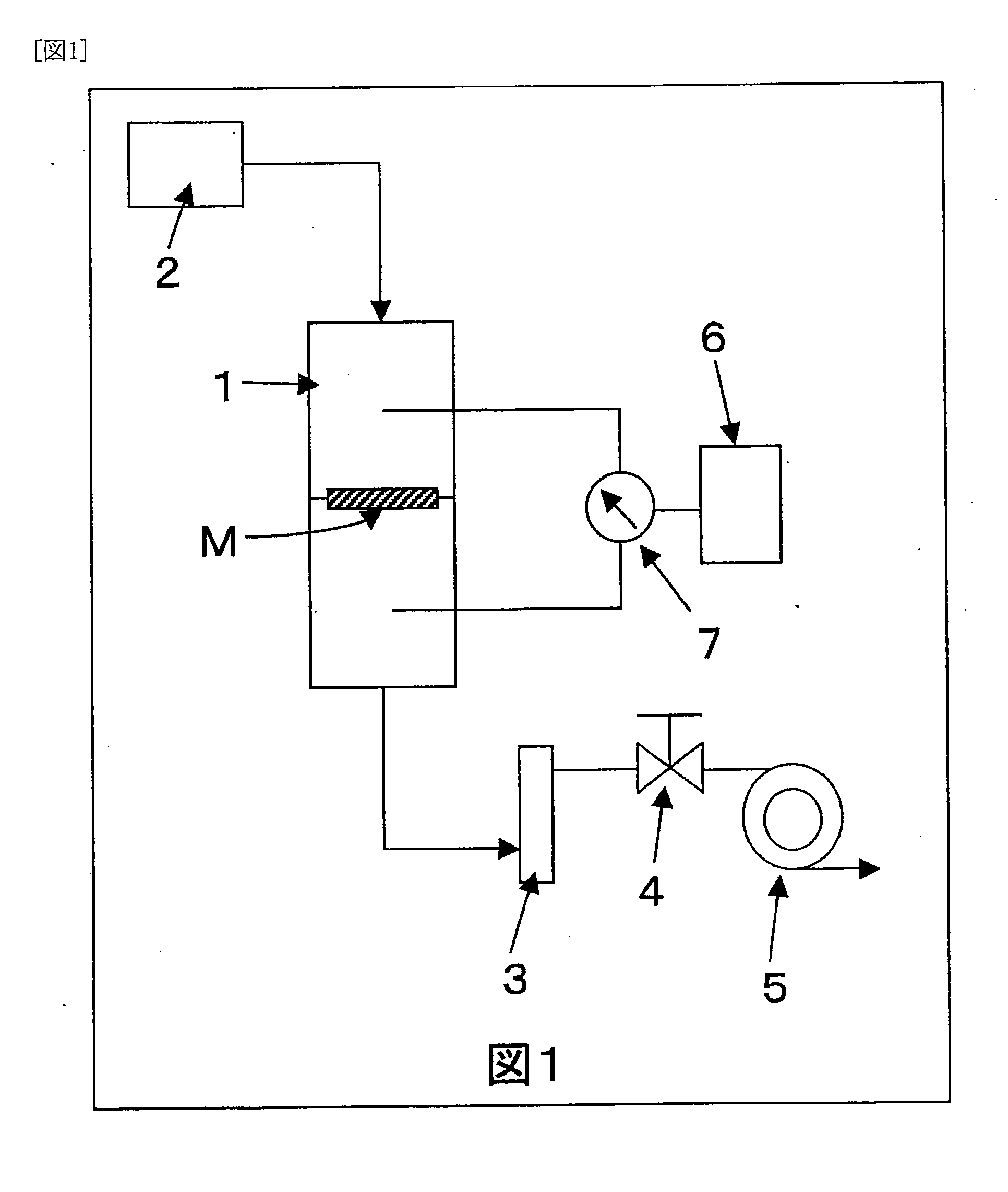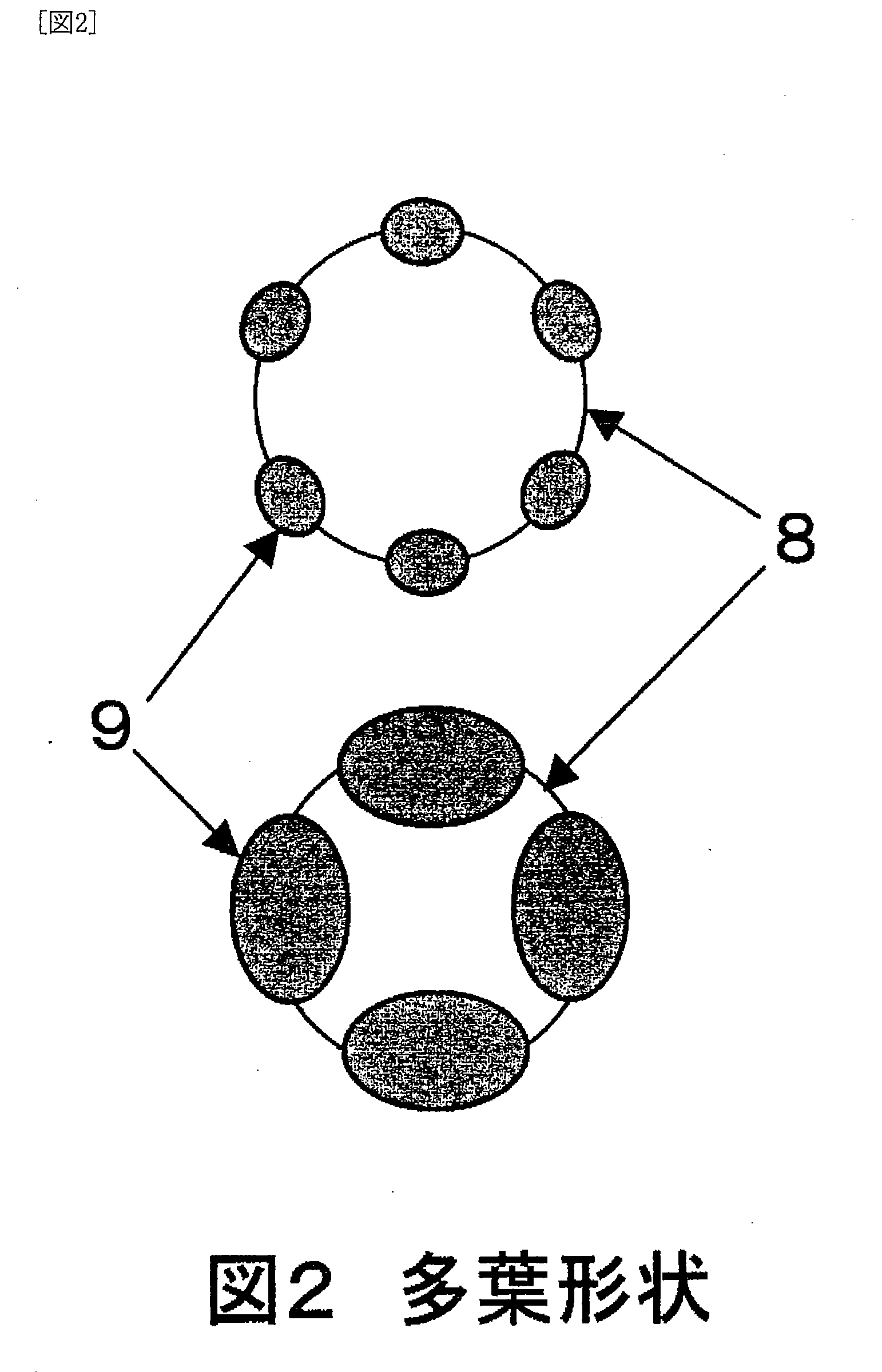Nonwoven fabric for filters
a technology of nonwoven fabric and filter, which is applied in the direction of weaving, separation process, filtration separation, etc., can solve the problems of insufficient collection capability of conventional thermo-compression type long fiber nonwoven fabrics, insufficient collection of obtained nonwoven fabrics that cannot sufficiently collect dust particles with particle sizes smaller than several micrometers, etc., to achieve excellent mechanical strength and thermal stability, excellent dust collection performan
- Summary
- Abstract
- Description
- Claims
- Application Information
AI Technical Summary
Benefits of technology
Problems solved by technology
Method used
Image
Examples
production example 1
[0077]Polybutylene terephthalate (PBT) with a melt viscosity of 390 poises and a melting point of 221° C. dried to a water content of 80 wt ppm or less was molten at 280° C., and the hot air volume and the cooling conditions were adjusted to achieve an average fiber diameter of 2 μm at a die temperature of 280° C. and a heating air temperature of 285° C., for producing a melt blown nonwoven fabric with a unit area weight of 30 g / m2.
production example 2
[0078]Polytrimethylene terephthalate (PPT) with a melt viscosity of 500 poises and a melting point of 232° C. dried to a water content of 80 wt ppm or less was molten at 280° C., and the hot air volume and the cooling conditions were adjusted to achieve an average fiber diameter of 5 μm at a die temperature of 280° C. and a heating air temperature of 285° C., for producing a melt blown nonwoven fabric with a unit area weight of 30 g / m2.
production example 3
[0081]Polyethylene terephthalate (PET) with a melt viscosity of 800 poises and a melting point of 260° C. dried to a water content of 80 wt ppm or less was molten at 295° C., and a copolyester (CO-PET) having an isophthalic acid copolymerization rate of 11 mol %, with a melt viscosity of 420 poises and a melting point of 230° C. dried to a water content of 80 wt ppm or less was molten at 280° C. With the polyethylene terephthalate as the core component and the copolyester as the sheath component, they were discharged at a die temperature of 300° C. from pores at a ratio by weight of core:sheath=80:20, spun by an ejector at a spinning rate of 4400 m / min, and the fibers were collected on a moving net conveyor, for obtaining a web. The web was thermally compressed between an emboss roll with a projection area of 16% and a flat roll at a temperature of 140° C. and a linear pressure of 60 kg / cm, to produce a spunbonded nonwoven fabric with a fiber diameter of 12 μm and a unit area weight...
PUM
| Property | Measurement | Unit |
|---|---|---|
| diameter | aaaaa | aaaaa |
| diameter | aaaaa | aaaaa |
| diameter | aaaaa | aaaaa |
Abstract
Description
Claims
Application Information
 Login to View More
Login to View More - R&D
- Intellectual Property
- Life Sciences
- Materials
- Tech Scout
- Unparalleled Data Quality
- Higher Quality Content
- 60% Fewer Hallucinations
Browse by: Latest US Patents, China's latest patents, Technical Efficacy Thesaurus, Application Domain, Technology Topic, Popular Technical Reports.
© 2025 PatSnap. All rights reserved.Legal|Privacy policy|Modern Slavery Act Transparency Statement|Sitemap|About US| Contact US: help@patsnap.com


